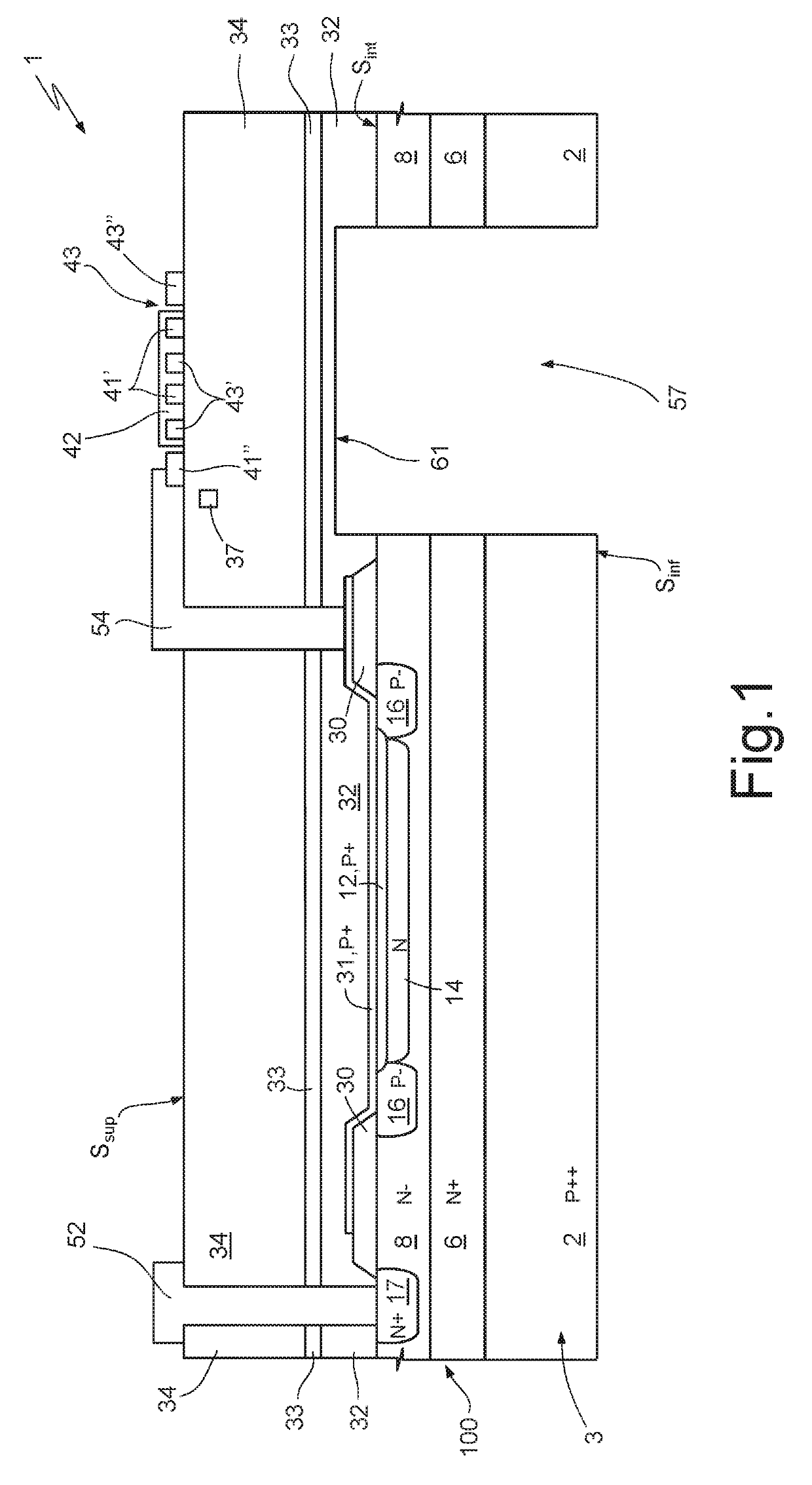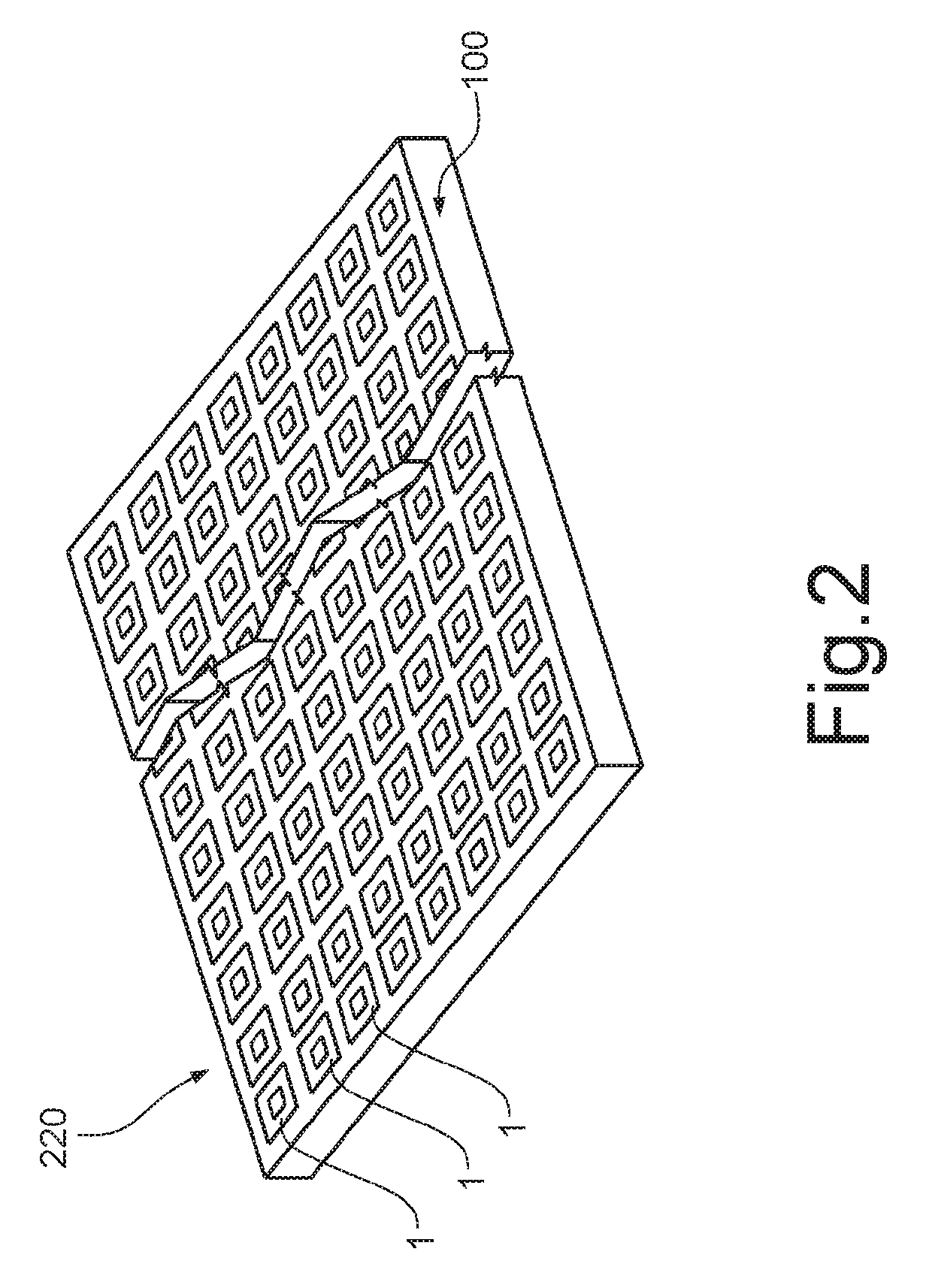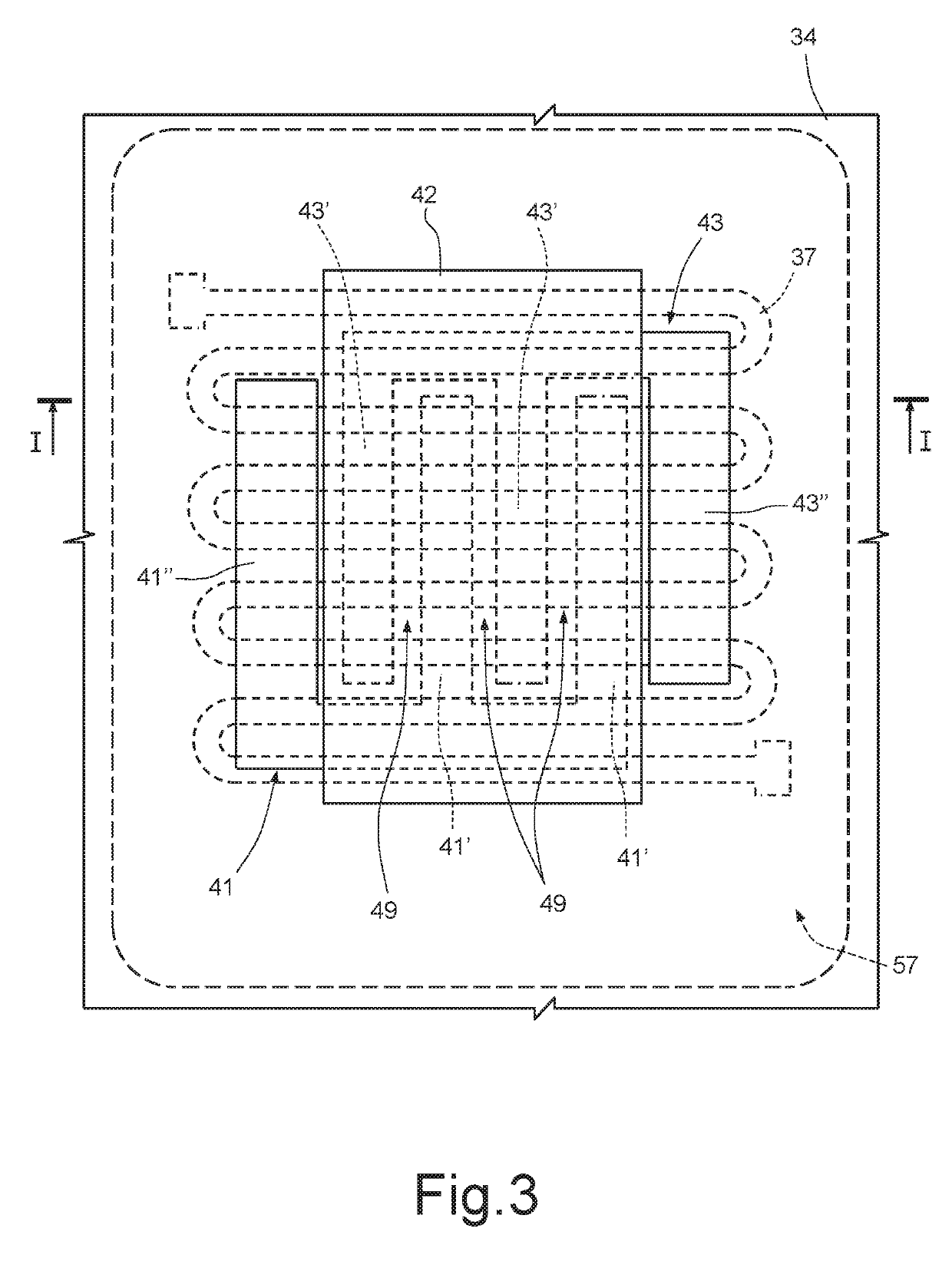High sensitivity optoelectronic device for detecting chemical species and related manufacturing method
- Summary
- Abstract
- Description
- Claims
- Application Information
AI Technical Summary
Benefits of technology
Problems solved by technology
Method used
Image
Examples
Embodiment Construction
[0015]The present optoelectronic device is based upon the principle of operation of Geiger mode avalanche photodiodes (GMAPs), also known as single-photon avalanche diodes (SPADs), in so far as they are able, at least theoretically, to ensure detection of individual photons.
[0016]In detail, it is known that a SPAD comprises a junction made of semiconductor material, which has a breakdown voltage VB and is biased, in use, at a reverse-biasing voltage VA higher in modulus than the breakdown voltage VB. In this way, the junction presents a particularly extensive depleted region, present in which is a non-negligible electrical field. Hence, generation of a single electron-hole pair, caused by absorption within the depleted region of a photon incident on the SPAD, may be sufficient for triggering an ionization process. This ionization process in turn causes an avalanche multiplication of the carriers, with gains of around 106, and consequent generation in short times (hundreds of picosec...
PUM
 Login to View More
Login to View More Abstract
Description
Claims
Application Information
 Login to View More
Login to View More - R&D
- Intellectual Property
- Life Sciences
- Materials
- Tech Scout
- Unparalleled Data Quality
- Higher Quality Content
- 60% Fewer Hallucinations
Browse by: Latest US Patents, China's latest patents, Technical Efficacy Thesaurus, Application Domain, Technology Topic, Popular Technical Reports.
© 2025 PatSnap. All rights reserved.Legal|Privacy policy|Modern Slavery Act Transparency Statement|Sitemap|About US| Contact US: help@patsnap.com



